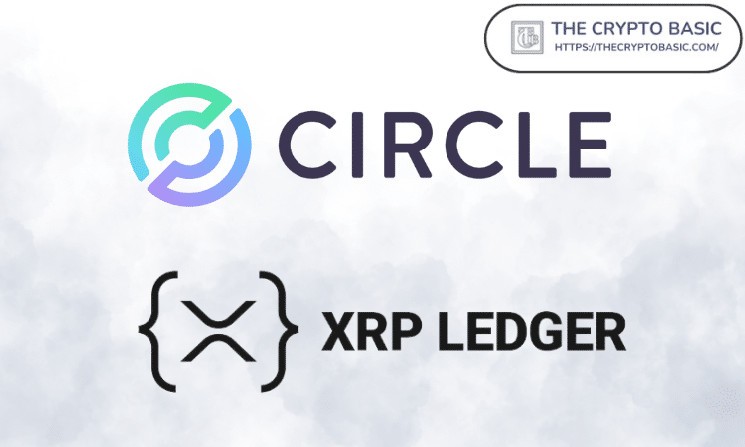Circle, the blockchain payments firm behind the USDC stablecoin, has responded to inquiries regarding the possibility of bringing USDC to the XRP Ledger (XRPL).
The XRP Ledger remains one of the most robust blockchain infrastructures, boasting low transaction fees and ample security that have attracted multiple projects. As of last November, the XRPL was home to over 1,500 projects looking to leverage these attractive features.
USDC Yet to Natively Support XRPL
However, despite the XRPL’s position as one of the oldest and most secure networks, the issuers of the two largest stablecoins, Tether and Circle, have not explored the possibility of bringing their respective stablecoin projects to the network.
Notably, Tether has extended native support for USDT to multiple blockchains over the years. USDT is available on Ethereum, Tron, Solana, Algorand, Tezos and several other networks. Similarly, USDC supports multiple chains, including Avalanche, Ethereum, Algorand, and Stellar.
Proponents have begun to ask questions about both stablecoin projects shying away from the XRPL. One such individual is Panos Mekras, a crypto author and builder on the XRP Ledger. Mekras, who founded the XRPL-based protocol Anodos, emailed Circle to get insights into why USDC is not yet on the XRPL.
There was a discussion recently about why @circle hasn't issued USDC on XRPL yet. So I decided to email Circle and ask them directly, mentioning also how important it is for our project Anodos to have USDC and EURC on XRPL. This is their answer. @Ripple it's time to step in. pic.twitter.com/2xEU1XZyU1
— Panos 🔼{X} (@panosmek) March 15, 2024
One possible reason some proponents spotlighted in the past was the lack of a Clawback feature, which would give stablecoin issuers the power to “clawback” assets at the request of law enforcement or at their discretion in the event of illegal activity.
Interestingly, the XRP Ledger recently passed an amendment to this effect, essentially implementing the Clawback feature on the network. However, no developments have suggested the imminent arrival of USDT or USDC.
Circle’s Response
Mekras emphasized in his email that the introduction of USDC and EURC on the XRP Ledger would be beneficial to his project, Anodos. In response, Circle acknowledged its readiness to extend support for USDC and EURC on more blockchains.
However, the firm noted that there is no information on plans for bringing both stablecoins to the XRP Ledger. They stressed that conversations surrounding the potential support for XRPL could be had with Ripple Labs.
The XRP community was taken aback by the reference to Ripple, as the blockchain payment company is regarded as one of the many contributors to the XRPL ecosystem and does not hold exclusive ownership of the network.
Mekras suggested that some of these companies see Ripple as the go-to firm for discussions on the XRP Ledger. However, he stressed that Ripple is not necessarily needed, as the XRPL is decentralized and independent of the payment firm.
USDC Support on XRPL Beneficial for Circle
Meanwhile, Block Digital co-founder Santiago Velez asserted that Circle’s reluctance to bring its stablecoins to the XRPL could be due to the firm’s competition with Ripple in the blockchain payments scene. Mekras argued against this claim.
According to him, Ripple is only one builder on the XRPL, so this should not be a problem. The same is true for the Stellar network, but USDC is already domiciled there. He stressed that Circle bringing USDC to the XRPL would be mutually beneficial to the company and the XRPL ecosystem.
Ripple is one project on XRPL so that's irrelevant, same can be said for Stellar too and other projects/companies on other chains focusing on payments. Circle makes money from USDCs usage, so the more the better. The benefit bringing Circle directly to XRPL are many and mainly…
— Panos 🔼{X} (@panosmek) March 15, 2024
He noted that such integration would help bolster USDC adoption for Circle. Further, Mekras stressed that the move could also facilitate exposure for the XRP Ledger, its native decentralized exchange (DEX), and the upcoming AMM. He also argued that native support would mitigate risks associated with using gateways to access USDC.
 thecryptobasic.com
thecryptobasic.com
